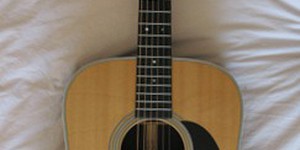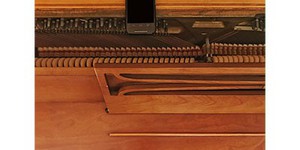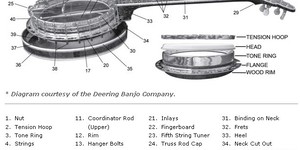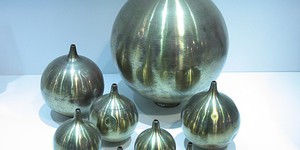Tenth Grade, Music Science Projects (13 results)
While everyone else is paying attention to what they see, maybe you're focusing on what you can hear. Explore the physics of sound, musical instruments, and even how people respond when they hear music.
|
Select a resource
Sort by
|
This is a rockin' project for guitarists with an interest in the physics behind the music. Have you ever wondered why the pitch of the note changes when you fret the string? You can find out for yourself with this project on the fundamental physics of stringed instruments.
Read more
Featured
Have you heard that garlic powder is supposed to inhibit the growth of bacteria? Which do you think would make a better disinfectant: a solution of garlic powder or a solution of bleach? This project shows you a straightforward way to compare the effectiveness of different disinfectants (or other antimicrobial agents), by measuring zones of inhibition on a culture plate.
Read more
In this project, you'll investigate the physics of standing waves on guitar strings. You'll learn about the different modes (i.e., patterns) of vibration that can be produced on a string, and you'll figure out how to produce the various modes by lightly touching the string at just the right place while you pick the string. This technique is called playing harmonics on the string. By the way, we chose a guitar for this project, but you can do the experiments using any stringed instrument, with…
Read more
New
If someone asks you to draw a picture of a doctor, lawyer, or engineer, what first pops into your mind? The race and gender of the person you imagine might be shaped by your personal life experiences, such as whether you have family members in those professions, or what representations of them you have seen on TV or online. What do you think will happen if you ask an artificial intelligence (AI) program to generate the picture instead? Will pictures generated by AI reflect the true real-world…
Read more
This is a great project for a musician who is interested in the physics of stringed instruments. If you've ever played an acoustic guitar, you may have noticed that picking a single string can make one or more of the other (unpicked) strings vibrate. When this happens, it's called sympathetic vibration. What intervals lead to the strongest sympathetic vibrations? Find out for yourself with this project.
Read more
The renowned pianist Vladimir Horowitz once said, "The most important thing is to transform the piano from a percussive instrument into a singing instrument." In this project, you will learn how you can make piano strings sing using sympathetic vibrations. Find out which notes make another one sing the longest by measuring their sound intensities using a smartphone equipped with a sensor app.
Read more
In this project you'll learn how to make a piezoelectric pickup for acoustic guitar using inexpensive components. You can then connect your acoustic guitar to an amplifier, and record your own music. If you are interested in electronics and like playing acoustic guitar, this could be the perfect project for you.
Read more
New
Have you ever noticed that on a hot day, it's more comfortable to wear a light-colored shirt than a dark one? Or that it's cooler in a park than walking down a street? This happens because different surfaces absorb and reflect heat in different ways. Urban heat islands are parts of cities where man-made surfaces like pavement and buildings replace natural surfaces like grass and trees. In this project, you will use temperature and satellite data to see if certain areas in a city have higher…
Read more
The banjo's roots trace all the way over to Africa. The unique sound that a banjo makes depends, in part, on the resonator. The purpose of the resonator is to amplify and project the sound that is made by strumming and plucking the strings. In this music science fair project, you will experiment with a resonator on a banjo and see if you can hear the difference in sound.
Read more
If you like playing electric guitar, this could be a cool project for you. Have you ever wondered how an electric guitar works? In this project you'll wind one or more of your own electric guitar pickups and test them out in an inexpensive electric guitar. How will the sound change with the number of turns you use in the coil? Or with the strength of the magnets you use?
Read more
Does listening to classical music help or hinder concentration and performance on cognitive tasks? You'll need help from a teacher to design two short, age-appropriate worksheet tests for this experiment. The tests should be of equal difficulty. You'll also need the cooperation of several additional classroom teachers in order to test enough students (at least 50-100, see the Science Buddies resource: How Many Participants Do I Need?). Half the students will take test A while listening to…
Read more
Helmholtz resonance, or air cavity resonance, refers to the resonance of air in a container with a small opening, like a plastic bottle or the devices shown in Figure 1. The resonant frequency of the air depends on the volume of the air in the container and the geometry of the opening (its length and cross-sectional area). The Helmholtz frequency is not the same as the natural frequency of an air column in a cylinder, where the opening is the same size and shape as the rest of the cylinder. …
Read more
Walk into any music store and you'll find a dizzying array of string choices for your classical guitar, including rectified nylon, clear nylon, carbon fluoride, bronze wound, phosphor bronze wound, silver-plated copper wire, Polytetra-flouro-ethylene (PTFE), each in a range of tensions from low to high. There is no single best brand or best material. All have their advantages and disadvantages. A set of strings that sounds "sparkling" on one guitar might sound dull on another, primarily because…
Read more
|
Explore Our Science Videos
See Germs! Hand Washing Science Experiment
Strawberry DNA Extraction
Racing Drones: Does Practice Make you Faster?
















